The more you think you’ve seen the most beautiful bird in the world, soon another one comes along to take your breath away.
Meet the Red Avadavat
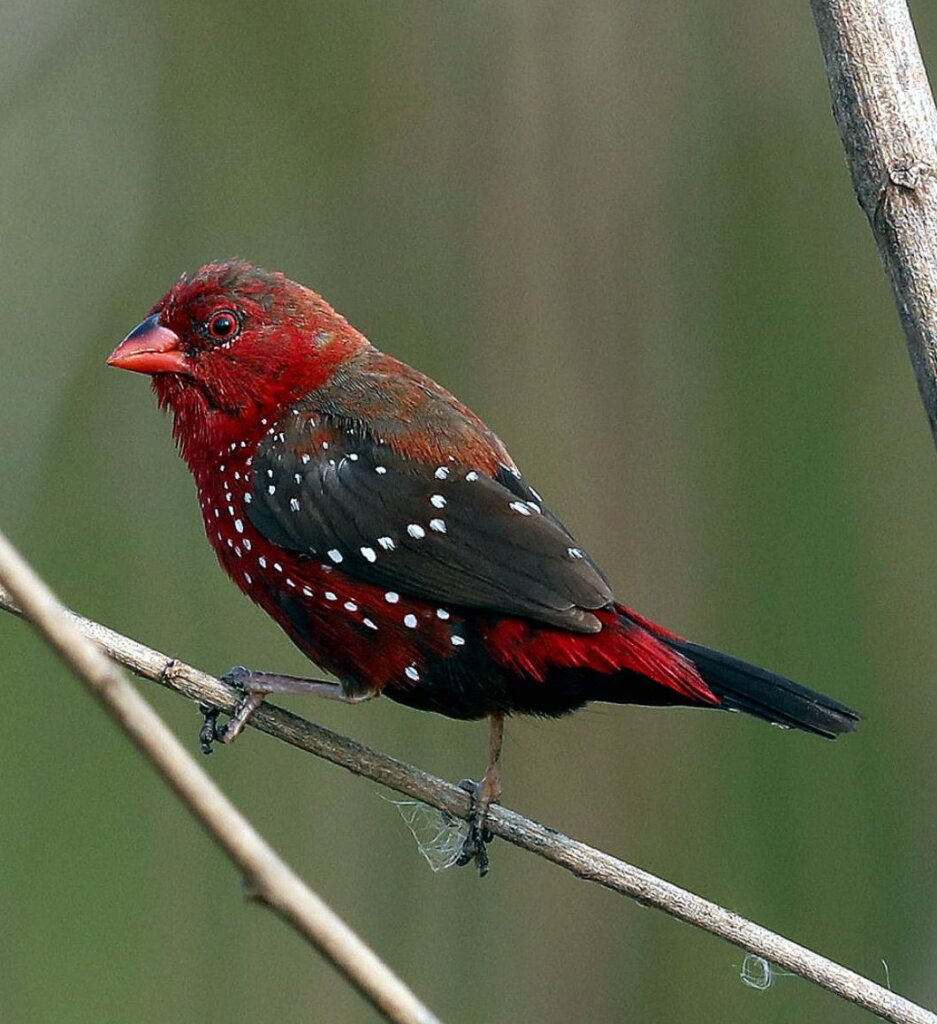
“_YT_5443- red avadavat” by lonelyshrimp is marked with CC0 1.0.
The red avadavat (Amandava amandava), is a small, sparrow-sized bird of the family Estrildidae and can be easily recognized for its scarlet body paired with tiny white dots. This small finch is easily identified by the rounded black tail and the bill that is seasonally red. The rump is red and the breeding male is red on most of the upper parts except for a black eye-stripe, lower belly, and wings. There are white spots on the red body and wing feathers. They are popular cage birds due to the colorful plumage of the males in their breeding season.
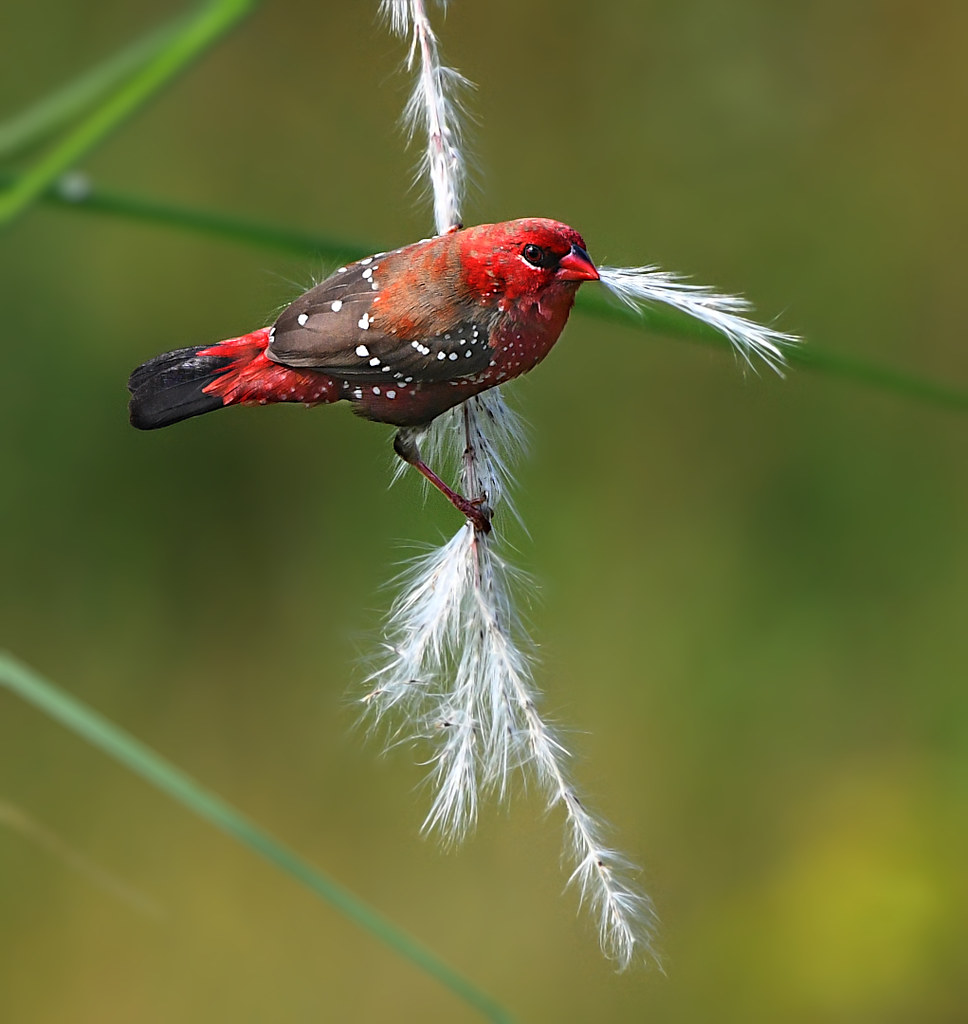
“Red avadavat” by shxrao is licensed under CC BY 2.0.
These birds are very small in size ranging from 3-4inches (9-10cm).
In this species of waxbill, the juvenile males are duller while the hen’s upper body is brown-gray while her underbelly to undertail is a yellow-gray.
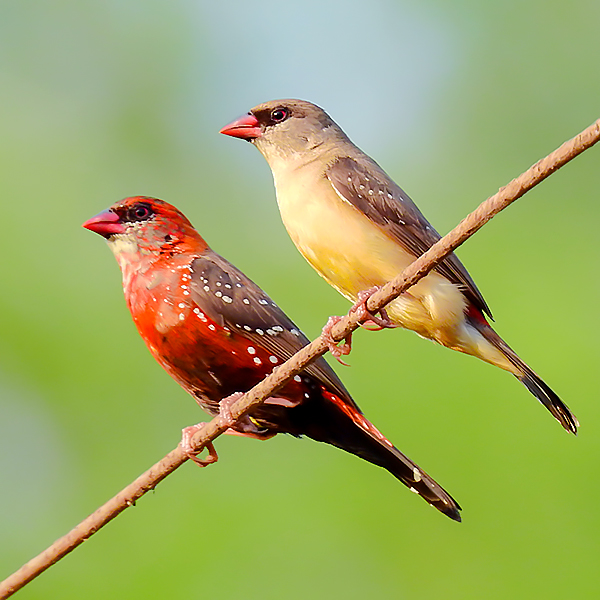
“File:A pair of Red avadavat (Amandava amandava) Photograph by Shantanu Kuveskar.jpg” by Shantanu Kuveskar is licensed under CC BY 4.0.
Their natural range stretches from the Indus valley of Pakistan to the plains of the Brahmaputra extending south to the peninsula of India.
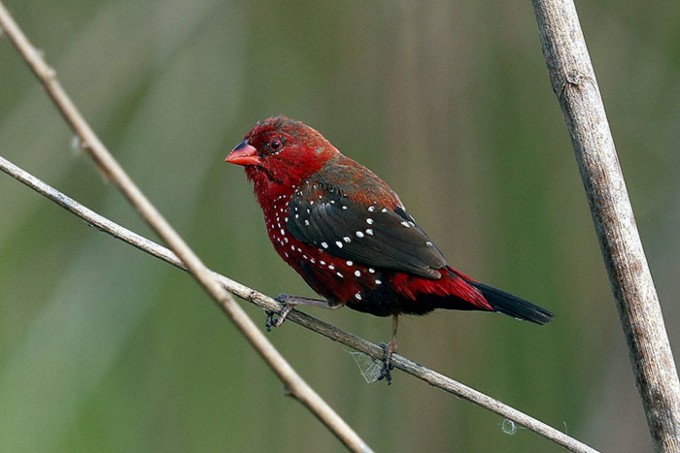
Photo Courtesy of lonelyshrimp
They inhabit the flat plains and are usually seen in places with tall grasses or crops often near water. Introduced populations also exist in southern Spain, Brunei, Fiji, Egypt, Malaysia, Portugal, Puerto Rico, Singapore, and Hawaii. In their natural habitat, they breed in the monsoon season.
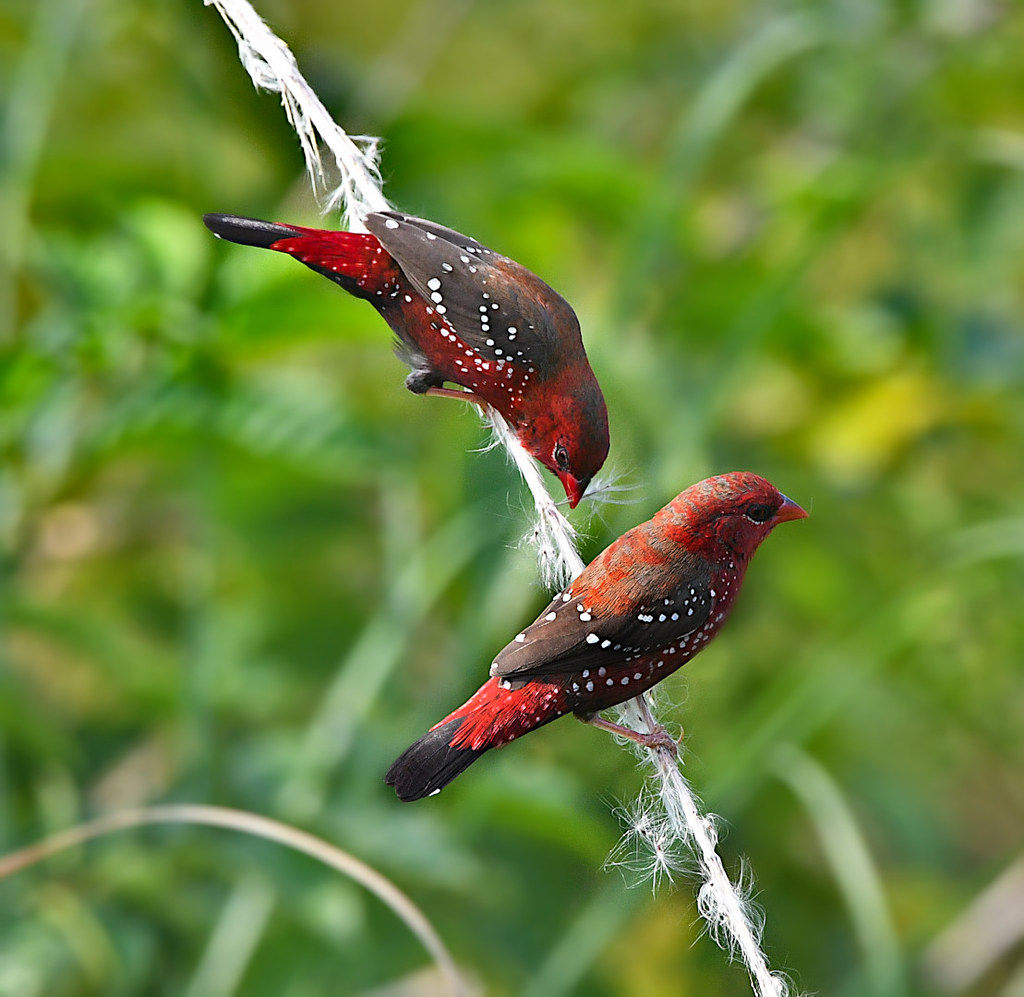
“Red avadavat” by shxrao is licensed under CC BY 2.0.
They feed mainly on grass seeds but will also take insects such as termites when they are available.

Photo Courtesy of Ajit Pendse
Once the breeding season begins the plumage of the males turns a dark bright red color. If environmental conditions are lacking the male is known to turn black. They build a globular nest made of grass blades. The usual clutch consists of 5 or 6 white eggs.
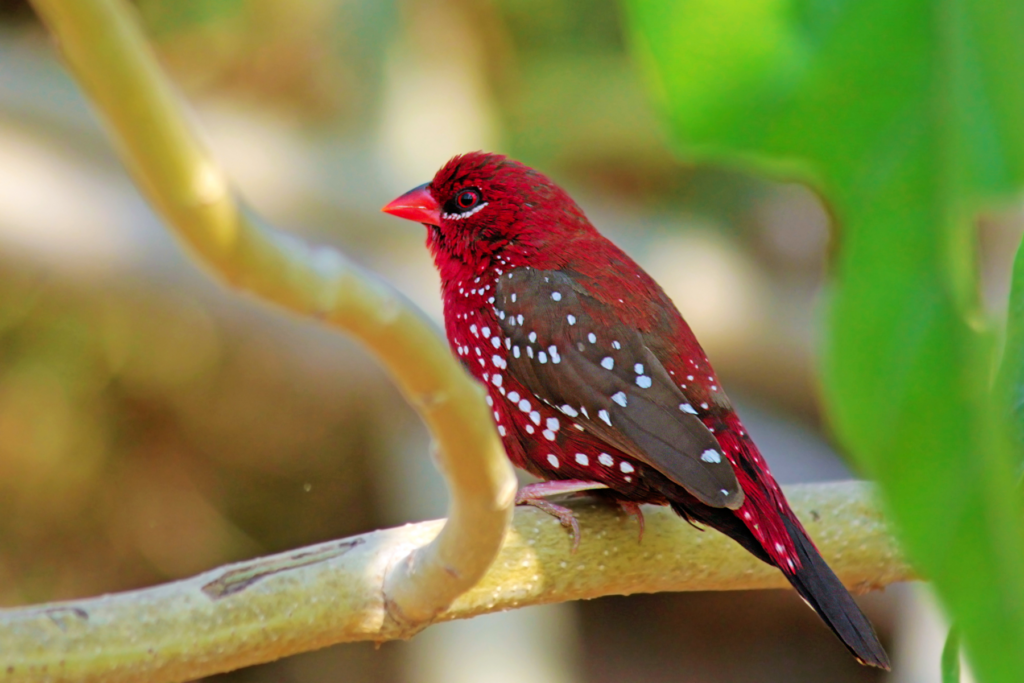
“File:Beauty in read.jpg” by Arindam Aditya is licensed under CC BY-SA 4.0.
These birds do best in a large planted aviary with mixed species. If you are wanting them to breed you can try separating them by pairs into large flights. Some people claim they will breed in breeding cages but we prefer to house them in single pair planted flight cages. Some heat will be required during the winter months so these birds are best suited for large indoor aviaries during winter. In the summertime, they will thrive and come into the best color in outdoor aviaries. This species of bird is actually the only waxbill that has a true song. The song reminds me of a melody of tiny silver bells somewhat resembling that of a Weaver but it is more monotonous. Only the males sing!

Photo Courtesy of C Fotografia – CC BY 2.0
These birds are considered as of least concern on the IUCN red list.
Watch and listen to this bird right here on the video below:




